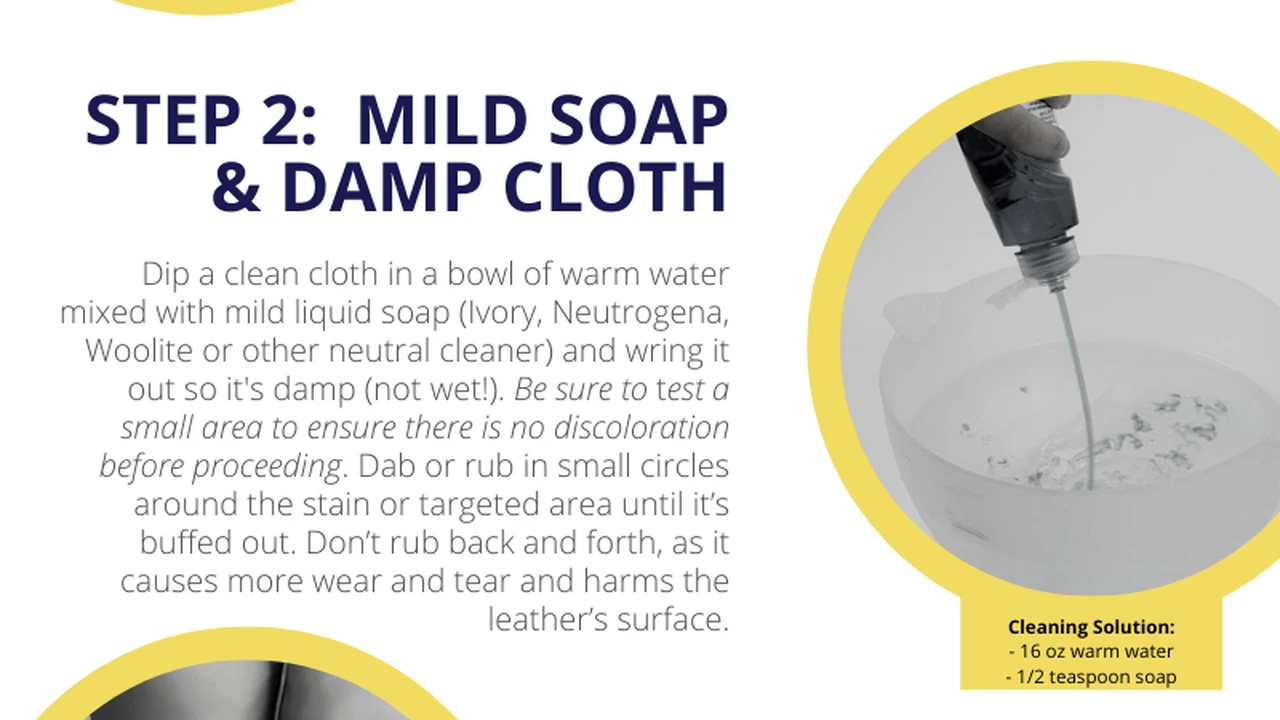The Ultimate Guide to Cleaning and Caring for Your Leather Wallet
Discover the ultimate guide to cleaning and caring for your leather wallet. Learn essential tips for cleaning and conditioning leather.

Why Leather Wallet Care Matters: Preserving Quality and Longevity
So, you’ve got yourself a beautiful leather wallet. Awesome! Leather is a fantastic material – durable, stylish, and it only gets better with age. But just like a fine wine or a classic car, your leather wallet needs a little TLC to stay in tip-top shape. Ignoring it can lead to dryness, cracking, staining, and generally, a less-than-impressive appearance. Think of it this way: a well-maintained wallet makes a statement about you. It shows you care about quality and attention to detail. Plus, taking care of your leather wallet is much cheaper than replacing it every year or two!
Understanding Leather Types: Different Leathers, Different Needs
Before we dive into the cleaning process, it’s important to understand what kind of leather your wallet is made of. There are a few common types, and each requires slightly different care:
- Full-Grain Leather: This is the highest quality leather. It’s the most durable and develops a beautiful patina over time. Full-grain leather wallets are often more expensive but worth the investment.
- Top-Grain Leather: A step down from full-grain, top-grain leather has had the top layer sanded or buffed to remove imperfections. It's still durable and looks great, but it won't develop the same patina as full-grain.
- Genuine Leather: This is the lowest grade of leather. It’s made from leftover scraps bonded together. Genuine leather wallets are usually the most affordable but also the least durable.
- Suede: Suede is made from the underside of the animal hide, giving it a soft, fuzzy texture. It’s more delicate than other types of leather and requires special care.
Check your wallet's label or the manufacturer's website to determine the type of leather. This will help you choose the right cleaning products and techniques.
Essential Leather Wallet Cleaning Supplies: What You'll Need
Here’s what you’ll need to get started:
- Soft Cloths: Microfiber cloths are ideal, as they’re gentle and won’t scratch the leather.
- Leather Cleaner: Choose a cleaner specifically designed for leather. Avoid harsh chemicals, alcohol-based cleaners, or household cleaners, as these can damage the leather. We'll recommend a few brands later.
- Leather Conditioner: Leather conditioner helps to moisturize the leather and prevent it from drying out and cracking.
- Soft Brush (Optional): A soft-bristled brush can be helpful for removing dirt and debris from textured leather.
- Water: Distilled water is best, as it doesn’t contain minerals that can leave residue.
Step-by-Step Leather Wallet Cleaning Guide: Getting Rid of Grime
Now for the fun part! Follow these steps to clean your leather wallet:
- Empty Your Wallet: Remove all cards, cash, and receipts. This will give you full access to all areas of the wallet.
- Dust and Debris Removal: Use a soft cloth or brush to remove any loose dirt or debris from the surface of the wallet. Pay attention to seams and crevices.
- Spot Cleaning: If you have any stains or spots, try spot cleaning them first. Dampen a clean cloth with a small amount of leather cleaner and gently blot the stain. Avoid rubbing, as this can spread the stain.
- Full Cleaning: If spot cleaning doesn’t work, or if your wallet is generally dirty, you can clean the entire wallet. Apply a small amount of leather cleaner to a clean cloth and gently wipe down the entire wallet. Again, avoid rubbing.
- Wipe Away Excess Cleaner: Use a clean, damp cloth to wipe away any excess cleaner from the wallet.
- Let It Dry: Allow the wallet to air dry completely away from direct sunlight or heat. This can take several hours.
Leather Wallet Conditioning: Keeping It Soft and Supple
Once your wallet is clean and dry, it’s time to condition it. Leather conditioner helps to replenish the natural oils in the leather, preventing it from drying out and cracking. Here's how:
- Apply Conditioner: Apply a small amount of leather conditioner to a clean cloth.
- Massage It In: Gently massage the conditioner into the leather in a circular motion.
- Wipe Away Excess: Use a clean cloth to wipe away any excess conditioner.
- Let It Absorb: Allow the conditioner to absorb into the leather for at least 30 minutes.
Recommended Leather Wallet Cleaning and Conditioning Products: Brands We Trust
Choosing the right products can make all the difference. Here are a few of our favorites:
- Leather Honey Leather Conditioner: A classic choice, Leather Honey is known for its ability to soften and protect leather. It's a great all-around conditioner and relatively affordable. Expect to pay around $20 for a bottle. Ideal for full-grain and top-grain leather.
- Lexol Leather Cleaner and Conditioner Kit: Lexol offers a gentle yet effective cleaner and conditioner kit. It's a good option for delicate leathers like suede. The kit is usually priced around $25.
- Obenauf's Heavy Duty Leather Preservative: For wallets that see a lot of wear and tear, Obenauf's is a great choice. It provides excellent protection against water and dirt. This is a more heavy-duty option, so it’s best for rugged, full-grain leather wallets. Expect to pay around $15.
Specific Scenarios and Solutions: Tackling Common Leather Wallet Issues
Water Stains on Leather Wallets
If your wallet gets wet, don't panic! Blot the water immediately with a clean cloth. Allow the wallet to air dry completely away from direct sunlight or heat. Once it’s dry, condition the leather to restore its moisture.
Ink Stains on Leather Wallets
Ink stains can be tricky. Try using a cotton swab dipped in rubbing alcohol to gently blot the stain. Be careful not to rub, as this can spread the ink. Follow up with leather cleaner and conditioner.
Grease Stains on Leather Wallets
For grease stains, try sprinkling cornstarch or talcum powder on the stain and letting it sit for several hours. The powder will absorb the grease. Then, brush away the powder and clean the area with leather cleaner and conditioner.
Leather Wallet Storage Tips: Protecting Your Investment
Proper storage is crucial for maintaining the quality of your leather wallet. Here are a few tips:
- Store in a Dust Bag: When not in use, store your wallet in a dust bag to protect it from dust and scratches.
- Avoid Direct Sunlight: Direct sunlight can fade and dry out the leather.
- Keep It Away from Heat: Heat can also damage the leather. Avoid storing your wallet near radiators or other heat sources.
- Don't Overstuff: Overstuffing your wallet can stretch the leather and cause it to lose its shape.
How Often Should You Clean Your Leather Wallet: Establishing a Routine
How often you clean your leather wallet depends on how often you use it and how dirty it gets. As a general rule, you should clean and condition your wallet every 3-6 months. However, if you notice any stains or dirt, clean it immediately.
DIY Leather Wallet Care: When to Call the Professionals
While you can clean and condition your leather wallet at home, there are times when it’s best to call a professional. If your wallet has severe stains, damage, or is made of a particularly delicate leather, a professional leather cleaner can help. They have the expertise and tools to safely and effectively clean and restore your wallet.
Comparing Leather Wallet Care Products: Choosing the Right One for You
Let's dive a little deeper into comparing some of the recommended products, considering different scenarios and wallet types.
Leather Honey vs. Lexol: A Head-to-Head Comparison
Leather Honey: This is a thicker, more concentrated conditioner. It's great for reviving older, drier leather wallets. The downside is that it can sometimes leave a slightly sticky residue if you apply too much. Best for: Older wallets, full-grain leather, wallets needing serious hydration.
Lexol: Lexol is a lighter, more gentle formula. It's ideal for regular maintenance and for wallets made of more delicate leathers. It's also less likely to leave a residue. Best for: Newer wallets, top-grain leather, suede (use the specific Lexol suede cleaner), regular maintenance.
Obenauf's vs. Leather Honey: When to Go Heavy Duty
Obenauf's: This is the heavy hitter. It's designed for wallets that are exposed to harsh conditions – think outdoor work, frequent travel, or just general rough handling. It provides a strong barrier against water and dirt. Best for: Rugged wallets, full-grain leather, wallets exposed to the elements, wallets used for outdoor activities.
Leather Honey: While effective, Leather Honey isn't designed for heavy-duty protection. It's more about moisturizing and softening the leather. Best for: Everyday use, wallets not exposed to extreme conditions, maintaining suppleness.
Real-World Leather Wallet Care Scenarios: Examples and Solutions
Scenario 1: The Coffee Spill
Problem: You accidentally spilled coffee on your light-colored leather wallet.
Solution: Act fast! Blot the coffee immediately with a clean, dry cloth. Don't rub! Once you've absorbed as much coffee as possible, dampen a clean cloth with a small amount of Lexol leather cleaner and gently blot the stained area. Wipe away any excess cleaner with a damp cloth. Allow the wallet to air dry completely. Finally, condition the leather with Lexol leather conditioner to restore moisture.
Scenario 2: The Overstuffed Wallet
Problem: Your wallet is bulging with cards and receipts, stretching the leather out of shape.
Solution: The best solution is prevention! Declutter your wallet regularly. Remove unnecessary cards and receipts. Consider switching to a minimalist wallet or cardholder. To help restore the shape, empty the wallet completely and gently massage the leather back into its original form. Condition the leather to help it regain its elasticity.
Scenario 3: The Forgotten Wallet in the Car
Problem: You left your wallet in the car on a hot day, and the leather feels dry and stiff.
Solution: Apply a generous amount of Leather Honey leather conditioner to the wallet. Massage it in thoroughly. Allow the conditioner to absorb for several hours, or even overnight. Wipe away any excess conditioner. The Leather Honey will help to rehydrate and soften the leather.
:max_bytes(150000):strip_icc()/277019-baked-pork-chops-with-cream-of-mushroom-soup-DDMFS-beauty-4x3-BG-7505-5762b731cf30447d9cbbbbbf387beafa.jpg)






